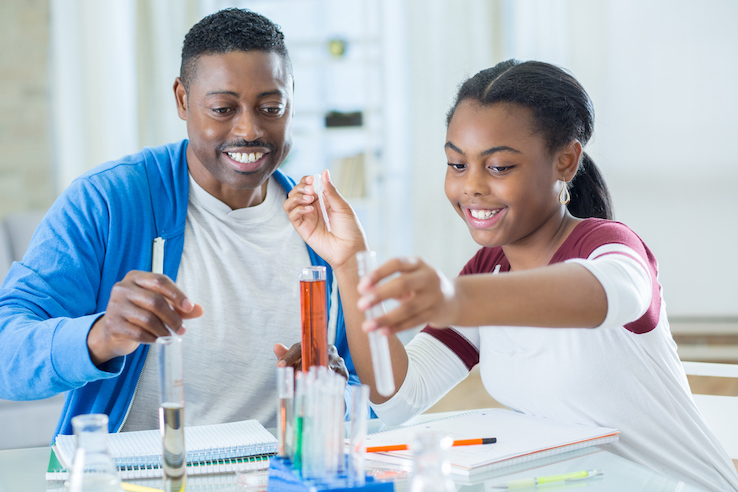Fun DIY Science Experiments to Try at Home

If you’re a seventh grader, teacher, or parent on the hunt for engaging science experiments to explore, you’ve landed in the perfect spot! Each of these seventh-grade science experiments is not only enjoyable but also simple to execute using common household items. Plus, they add a delightful twist to the journey of understanding and reinforcing key scientific principles.
Are you excited to discover how thrilling science can truly be? Dive into these experiments, gather your materials, and let the exploration begin!
Build the World’s Simplest Motor
Ever wondered how motors work? At their most basic, motors work by converting electrical energy into motion. This experiment is an easy way to demonstrate the process so you can see it in action. All you’ll need is a battery, a piece of copper wire and a strong magnet made from a metal called neodymium.
By arranging these three items in a specific way, you’ll be able to circulate an electric current that moves through a magnetic field. The effect? The whole setup will produce enough rotation to make the wire turn and spin. This one would make for a great science fair experiment with some research into the Lorentz Force, which is what happens when charged particles move through both a magnet and electrical field at the same time.
Create Glimmering Rainbow Film Paper
If you tend to appreciate art as much as science, then you’ll love this experiment that combines the best of both worlds. All it requires is black construction paper, a few drops of clear nail polish, and a plate or shallow bowl you can fill with water. By combining these simple ingredients, you can create beautiful rainbow film art.
Perhaps the only thing cooler is the science behind how it all works. When you drop the nail polish into the water, it spreads out to create an ultra-thin film that’s in the same size range as the wavelength of light. Because the film will be a tad thicker in some places than the others, it’ll reflect light in different ways, creating a rainbow effect.
This is the same effect that sometimes appears the surface of bubbles or the surface of puddles of oil. By following the steps in the experiment, you can transfer this iridescent layer onto the construction paper.
Toast S’mores in Your Own Solar Oven
Want to make your own s’mores without building a campfire? Check out this experiment, which walks you through building your own solar oven. This one requires a few more supplies, but you probably already have most of them around your house. The most important elements are an empty pizza box, aluminum foil, plastic wrap, black construction paper, newspapers, and a wooden spoon or ruler.
With this experiment, you’ll be building a DIY collector box, which is a box that absorbs sunlight. The aluminum foil causes the sunlight to bounce into the inside of the box, where it gets trapped under the plastic wrap. The black paper helps to absorb the heat the sun generates, while the newspaper serves as insulation to keep the inside of the box warm. Just make sure you’re careful; conduct your experiment with adult supervision — this little homemade oven can reach up to 200 degrees Fahrenheit on a sunny day!
Build a Model da Vinci Bridge With Popsicle Sticks
Leonardo da Vinci was undoubtedly a brilliant inventor and artist who’s still known as much for his innovative scientific designs as he is for his incredible artwork. One of the things he came up with is known as the da Vinci bridge, which is still a clever concept to this day. The whole premise behind it is that the bridge is built in a way that lets it support its own weight using gravity.
This experiment helps you build your own da Vinci bridge on a smaller scale using popsicle sticks. You could also use pencils or even actual sticks. It may take a bit of tinkering to get it just right, but this is a fun one to experiment with as you see how much weight your bridge is capable of holding.
Transform Gelatin Into Plastic
While it may be hard to imagine those gelatin packets in your fridge as anything but deserts, this experiment can teach you how to make your own bioplastic with them. All you need are three packets of gelatin, which you’ll mix with 75 milliliters of water before boiling the mixture in a pot on your stove. After that, you have two options.
In the first, you wait until the mixture cools and mold it by hand into whatever cool shapes you like. You can even add in some food coloring to make your own colorful plastic sculpture. If you already have a desired shape in mind, you can go the second route and pour the mixture into silicone molds, adding food coloring if you’re feeling creative.
It helps to be a little patient as you wait to see the final product, because the mixture can take anywhere from two to five days to dry completely. Once it does, however, you’ll be rewarded with some really cool plastics of your own design.
Extract Visible DNA From a Strawberry
Extracting DNA that you can actually see without a microscope may sound impossible at first. But this experiment will teach you how to do precisely that by extracting the DNA of thousands of cells at once. Aside from strawberries, you’ll need common household supplies like dishwashing liquid, rubbing alcohol and salt.
Your “lab supplies” will include simple items like a test tube (or small cup), a rubber band and a coffee filter. Simply follow the instructions to pull plenty of DNA from your strawberries and watch as it clumps together, floating to the top layer of your test tube. This one may be easy, but it also tends to be super impressive!





